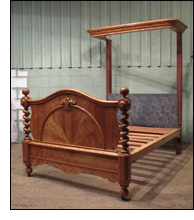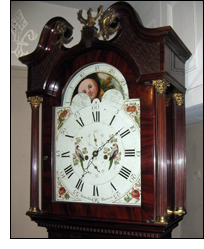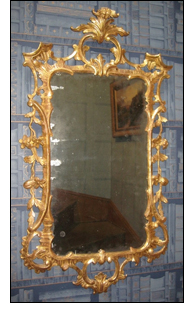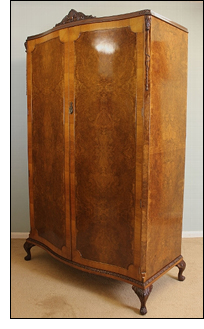Antiques Magazine Archive, September 2013
Antique Beds
 There’s nothing grander than an antique bed –imagine walking into the bedroom to see the most exquisitely carved bedstead complete with a sumptuous mattress to lie on? It would certainly be quite a site and many people do invest in antique beds, rather than pay for a contemporary one and one can hardly blame them. Many Victorian beds, especially French ones are more ostentatiously carved, while others from a similar period are plainer, but no less beautiful. There are many antique beds available on www.antiques.co.uk that have been sourced from various locations. The more elaborate French ones sit alongside the more conservative English ones amidst the odd Italian bed and some 18th century Georgians. They’re all carved from various types of wood, the most common being oak, walnut and chestnut. There is certainly a wide choice and if you’re looking for a bed, you’ll have plenty to choose from.
There’s nothing grander than an antique bed –imagine walking into the bedroom to see the most exquisitely carved bedstead complete with a sumptuous mattress to lie on? It would certainly be quite a site and many people do invest in antique beds, rather than pay for a contemporary one and one can hardly blame them. Many Victorian beds, especially French ones are more ostentatiously carved, while others from a similar period are plainer, but no less beautiful. There are many antique beds available on www.antiques.co.uk that have been sourced from various locations. The more elaborate French ones sit alongside the more conservative English ones amidst the odd Italian bed and some 18th century Georgians. They’re all carved from various types of wood, the most common being oak, walnut and chestnut. There is certainly a wide choice and if you’re looking for a bed, you’ll have plenty to choose from.
Antique Clocks
 “I must govern the clock, not be governed by it.”
“I must govern the clock, not be governed by it.”
The words of Golda Meir the one time Israeli Prime Minister, wise words indeed, but one can however, admire a clock, even if one does not allow oneself to be governed by it.
I love clocks, I can remember listening to the rhythmic ticking of my Aunt Agnes’ grandfather clock, it wasn’t a full one, but a half with a large swinging pendulum, and it hung beautifully from the wall near the door of her sitting room. I waited eagerly for the clock to strike on the hour and it was my first real sense of time and its passing.
Antique Mirrors
 Mirrors are the windows of the soul. They’re places for self-admiration as well as just a reflective surface on a wall. They can certainly add certain grandeur to a room or hallway when you have one. When out shopping for antiques or vintage furniture, it’s easy to be carried away by the romance of a beautiful mirror and why not, I can think of no greater way of enhancing the beauty and shape of a room than with a mirror.
Mirrors are the windows of the soul. They’re places for self-admiration as well as just a reflective surface on a wall. They can certainly add certain grandeur to a room or hallway when you have one. When out shopping for antiques or vintage furniture, it’s easy to be carried away by the romance of a beautiful mirror and why not, I can think of no greater way of enhancing the beauty and shape of a room than with a mirror.
Mirrors of course have been around forever, and the first glimpse, as humans, we had of ourselves is probably via water collected in a simple vessel. People started making mirrors from around 3000 BC in Egypt and from around 2000 BC in China.
Antique wardrobes
 When is a wardrobe not a wardrobe? When it’s believed to be something completely different and you may or may not be surprised to know that a wardrobe wasn’t always for storing clothes. In the medieval times a wardrobe would most often be referred to as a room rather than a place to store clothes, while a press was often used to store garments lying down. By the 17th century however a wardrobe was starting to be recognised as a place to store clothes that were hung up rather than laying them flat. They were often built into panels in a bedroom that seemed like an early version of the inlaid wardrobe. So by the time we reach the 18th century the wardrobe had become two very separate things, a clothes press where clothes would lie flat in order to smooth them out and then the wardrobe (a recess within a wall) in which garments were hung up.
When is a wardrobe not a wardrobe? When it’s believed to be something completely different and you may or may not be surprised to know that a wardrobe wasn’t always for storing clothes. In the medieval times a wardrobe would most often be referred to as a room rather than a place to store clothes, while a press was often used to store garments lying down. By the 17th century however a wardrobe was starting to be recognised as a place to store clothes that were hung up rather than laying them flat. They were often built into panels in a bedroom that seemed like an early version of the inlaid wardrobe. So by the time we reach the 18th century the wardrobe had become two very separate things, a clothes press where clothes would lie flat in order to smooth them out and then the wardrobe (a recess within a wall) in which garments were hung up.





